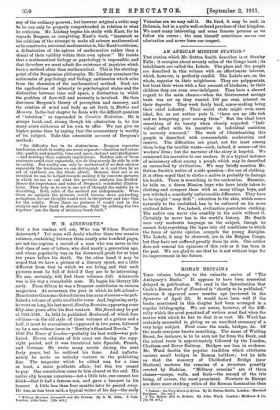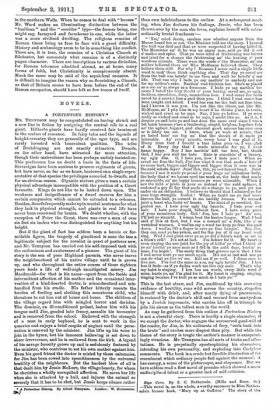ROMAN BRITAIN.t
Tins volume belongs to the valuable series of "The Antiquary's Books." It appears to have been somewhat delayed in publication. We read in the Introduction that Curle's Roman Fort of Newstead is "shortly to be published," whereas it appeared some months ago (reviewed in the Spectator of April 22). It would have been well if the books mentioned in this chapter bad been arranged in a regular bibliography. We are aware, however, of the diffi- culty which the most practised of writers must find when the matter with which he has to deal is so vast. Mr. Ward has certainly succeeded in giving us an excellent summary of a very large subject. First come the roads, bridges, &c. Of the roads everyone knows something. The name of Watling Street, for instance, is to be seen not fax from the Bank, and the actual route is approximately followed by the London, Chatham and Dover Railway. Bridges are less in evidence. Mr. Ward doubts the popular tradition which attributes various small bridges to Roman builders ; but he tells us that the masonry of Chollesford Bridge (near Hexham) encloses the remains of a structure possibly erected by Hadrian. "Military remains" are of three classes—camps, walls, and forts—the second of the trio being, of course, the most prominent. Nowhere in Europe are there more striking relics of the Roman domination than • Yakasts : the Vary Heart of Africa. By H. Sutton Smith. London : Marshall Brothers. [6s. net.]
t The Boman Era in Britain. By Sohn Ward. London : Methuen dc Co. [7s. 6d. net.]
in the northern Walls. When he comes to deal with " houses " Mr. Ward makes an illuminating distinction between the " basilican " and the " corridor " type—the former being, one might say, farmyard and farmhouse in one, while the latter was a more civilized dwelling. The religions remains of Roman times bring us face to face with a great difficulty. History and archeology seem to be in something like conflict. There are, it is true, the remains of a Christian Church at Silchester, but commonly what remains is of a distinctly pagan character. There are inscriptions to various divinities, for Roman tolerance admitted abroad, as at home, many forms of faith, but Christianity is conspicuously absent. Much the same may be said of the sepulchral remains. It is difficult to imagine the reason why so flourishing a Church, as that of Britain seems to have been before the end of the Roman occupation, should have left so few traces of itself.







































 Previous page
Previous page